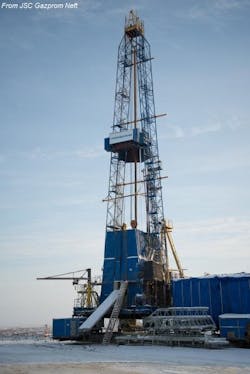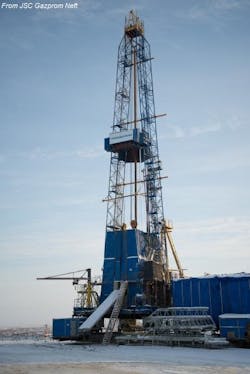JSC Gazprom Neft has started drilling three exploratory wells on each of its Ignyalinsky, Vakunaysky, and Tympuchikansky fields as part of its Chonsky project in eastern Siberia.
Drilling of an additional well on the Tympuchikansky block will begin within a month, Gazprom Neft says. Data obtained from further well testing will enable clarification of the fields’ geological models so the blocks can be prepared for production drilling.
Following geological prospecting last year, Gazprom Neft increased estimated reserves at the Chonsky project by an additional 50%, with total C1 and C2 reserves across all three blocks now totaling more than 210 million tonnes of oil and 270 billion cu m of gas, the company said.
Gazprom Neft says preparation of the most thoroughly researched blocks for production testing, expected to start next year, is “a key objective in 2015.”
Licenses on the Ignyalinsky, Vakunaysky, and Tympuchikansky blocks, which are at the border of the Irkutsk Oblast and the Sakha Republic (Yakutia), are held by Gazprom Neft subsidiary Gazpromneft-Angara.
“Gazprom Neft has been actively developing the Chonsky project since 2011,” commented Victor Sorokin, Gazpromneft-Angara chief executive officer. “The drilling of prospecting and exploratory wells clarifies our understanding of the geological structure of complex deposits in what is a very under-researched region.
“Continuation of the geological prospecting program will allow remaining geological uncertainties on this project to be dispelled, and the level of recoverable reserves to be increased” Sorokin said. “The 2014–15 polar season has also witnessed an industry record in terms of seismic operations at the Gazpromneft-Angara licensed blocks, with 4,200 separate pieces of physical data recorded in the course of a single day.”
A total 66 prospecting and exploratory wells have been drilled and 2,750 sq km of 3D surveys conducted throughout the three fields.


